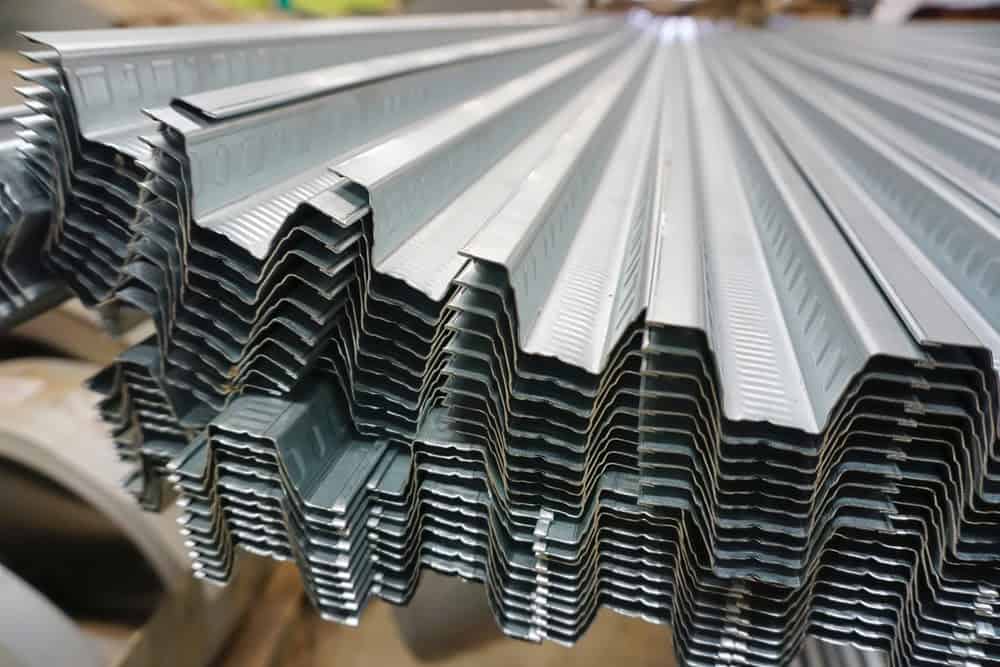Views: 0 Author: Rachel Wynn Publish Time: 2025-04-27 Origin: Site











Galvanized steel is designed to resist rust and corrosion through a protective layer of zinc, which acts as a sacrificial barrier. While it is highly resistant to rust, galvanized steel is not completely rust-proof. Over time, exposure to harsh environmental factors such as saltwater, acid rain, or industrial pollutants can degrade the zinc coating. Once the protective layer is compromised—due to scratches, physical damage, or natural wear—the underlying steel becomes vulnerable to rusting. In general, galvanized steel will rust more slowly than regular steel, but it can still rust under certain conditions, especially in areas with high humidity or corrosive environments. Regular maintenance and protective coatings can help prolong its lifespan and maintain its corrosion resistance.
Galvanized steel is carbon steel that has been coated with a layer of zinc to protect it from corrosion. The zinc layer acts as a sacrificial barrier, meaning it corrodes first, protecting the underlying steel.
The most common method of galvanization is hot-dip galvanizing, where steel parts are submerged in molten zinc, forming a robust, metallurgically bonded coating.
Key benefits of galvanization include:
Enhanced resistance to moisture, oxygen, and environmental pollutants
Lower maintenance requirements
Extended lifespan even in challenging environments
Although galvanized steel is highly resistant to corrosion, it is not completely rust-proof. Over time, several factors can compromise the protective zinc coating:
Environmental Exposure: Prolonged exposure to acid rain, saltwater, or industrial pollutants can wear down the zinc layer.
Physical Damage: Scratches, dents, or abrasions can remove or weaken the protective coating, exposing bare steel.
Aging: The zinc coating naturally degrades over decades, especially in harsh conditions, eventually exposing the steel underneath.
Poor Galvanization: Thin or uneven zinc coatings can lead to premature corrosion.
Once the protective zinc layer is compromised, the underlying steel becomes vulnerable to oxidation and rust formation.

The time it takes for galvanized steel to rust depends heavily on the environment and the quality of the galvanization:
| Environment | Estimated Lifespan of Galvanized Steel |
|---|---|
| Rural (low pollution) | 50–70 years |
| Urban (moderate pollution) | 30–50 years |
| Coastal (high salt exposure) | 20–25 years |
| Industrial (high chemicals) | 10–20 years |
In clean, dry conditions, galvanized steel can last for decades without significant corrosion. However, in marine, humid, or industrial environments, rusting may occur much sooner.
Recognizing early signs of wear is essential to maintain structural integrity:
White Rust: Early-stage oxidation of zinc; appears as a powdery, white deposit.
Red Rust: Indicates exposure of the underlying steel and active corrosion.
Flaking or Peeling: Detachment of the zinc layer due to severe environmental or mechanical stress.
Dull or Matte Finish: Loss of the shiny galvanized appearance, suggesting zinc depletion.
While galvanized steel is already corrosion-resistant, you can take additional steps to maximize its lifespan:
Avoid scratching or cutting the surface during installation to maintain coating integrity.
Clean galvanized surfaces periodically with mild detergents and soft brushes to remove pollutants, dirt, and salts.
Apply cold galvanizing sprays or clear sealants on vulnerable areas, especially welds or cut edges.
Do not use strong acids, chlorine, or abrasive cleaners on galvanized steel, as these can accelerate zinc corrosion.
If connecting galvanized steel with other metals, use similar materials to prevent galvanic corrosion.
If rust appears, early intervention can save the structure:
Light Surface Rust:
Clean with a wire brush or sandpaper.
Apply a cold galvanizing compound to restore protection.
Severe Rust:
Remove heavily corroded sections if possible.
Recoat with specialized zinc-rich paints or replace the component entirely if structural integrity is compromised.
Galvanized steel is an exceptional material for resisting rust and corrosion, but it is not invincible. Over time, environmental factors, mechanical damage, and aging can degrade the zinc layer, eventually exposing the underlying steel to rust.
With proper care, regular inspections, and preventive measures, galvanized steel structures can maintain their strength and appearance for decades, delivering outstanding performance even in demanding conditions.
By understanding the risks and maintenance strategies, you can maximize the investment in galvanized steel and ensure long-term durability and safety.

Both galvanized steel and stainless steel are corrosion-resistant, but they work differently. Stainless steel resists rust due to its chromium content, forming a self-healing oxide layer, while galvanized steel relies on its sacrificial zinc coating. In highly corrosive environments (like coastal areas), stainless steel generally performs better long-term. However, galvanized steel is often more cost-effective for moderate exposure conditions.
Yes, you can paint galvanized steel, but it requires proper surface preparation. The zinc coating must be cleaned and sometimes lightly etched to allow the paint to adhere effectively. Specialized primers designed for galvanized surfaces, such as epoxy or acrylic primers, are recommended for best results.
If the galvanized coating is scratched but the damage is minor, the surrounding zinc can often continue protecting the exposed steel through a process called cathodic protection. However, deep scratches that remove significant amounts of zinc may lead to localized rust, especially if left untreated. Applying a cold galvanizing spray to scratches can help restore protection.
Galvanized steel can handle occasional water exposure, but constant submersion, especially in saltwater, will rapidly corrode the zinc coating. For permanent underwater applications, materials like stainless steel or specially treated metals are typically recommended.
Signs that the galvanization is wearing off include:
Development of white powdery residue (white rust)
Dulling of the shiny zinc finish
Visible red rust spots
Flaking or peeling of the surface






